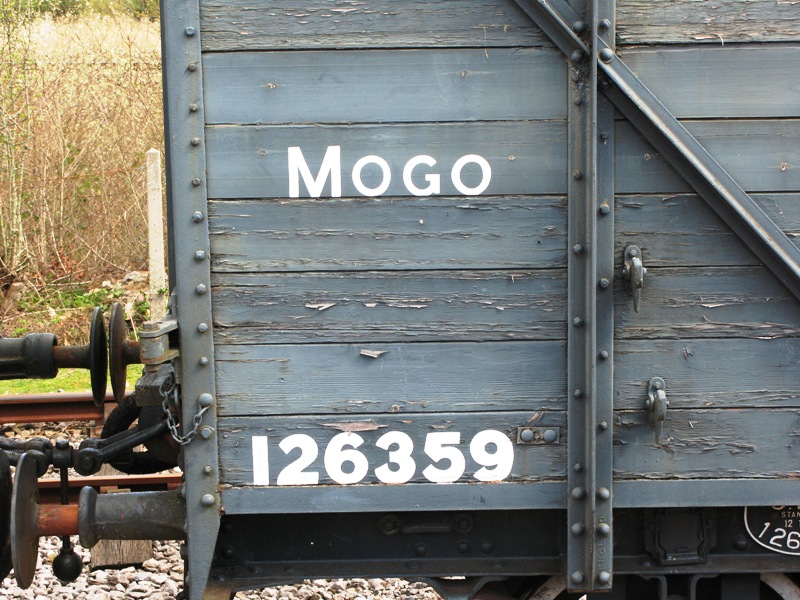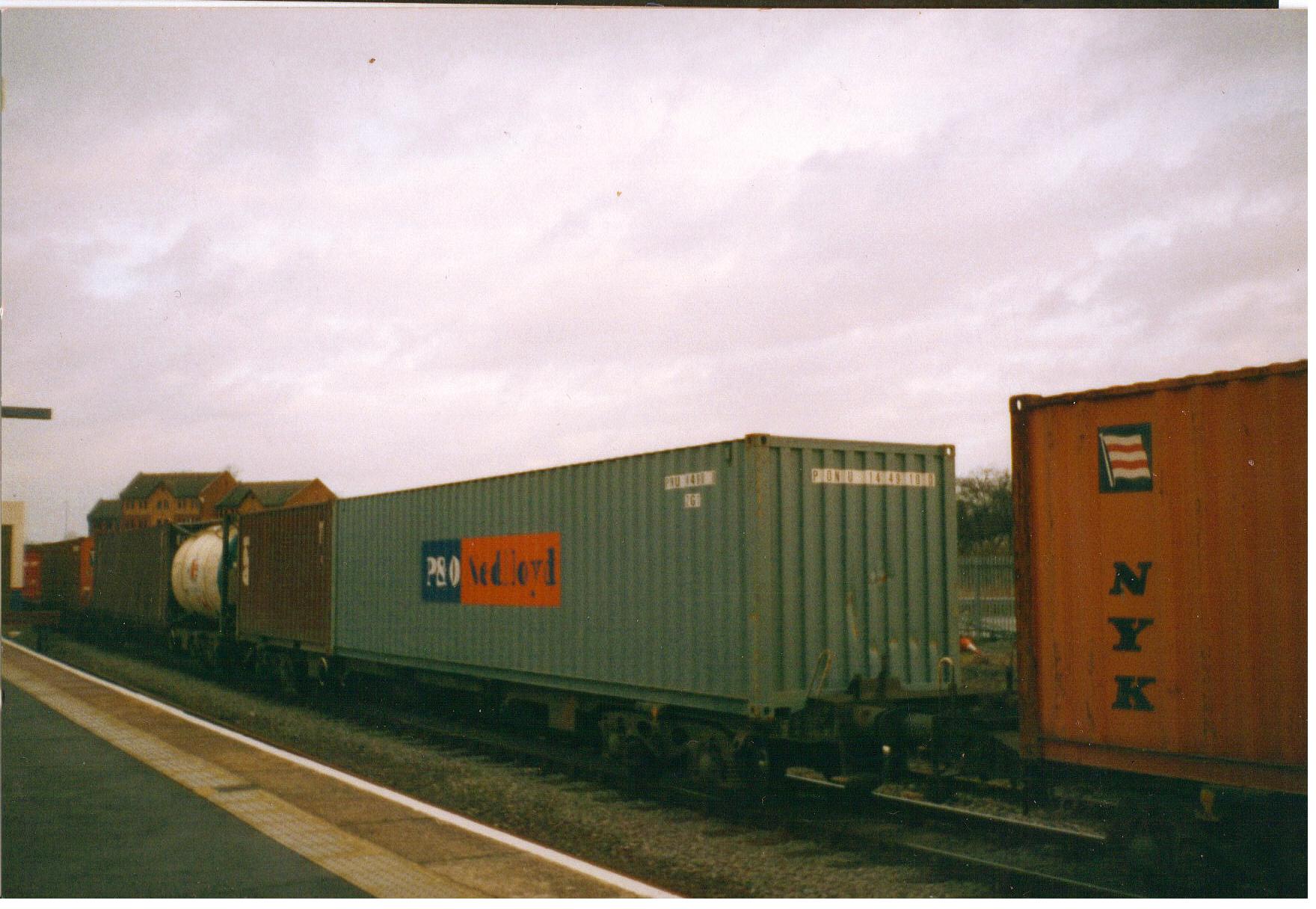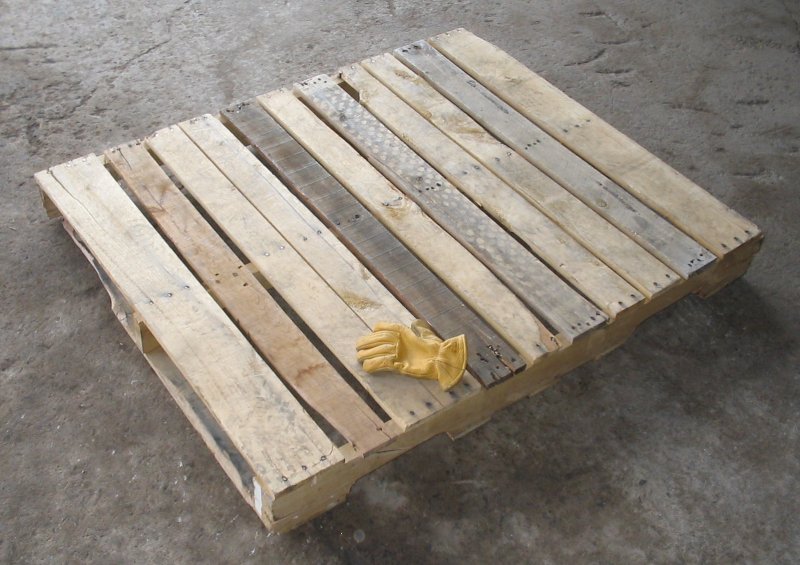|
Conflat
Conflat is a United Kingdom railway term for a short wheelbase flat wagon container wagon. British Railways used several standard types of wagon. The Conflat A, which could carry one type 'B', or two type 'A', containers, was the most common. It was regularly used to carry AF ( frozen food) containers: while the Conflat L, which could carry three smaller containers for bulk powders, was also produced in large numbers. The Conflat B wagon could carry 2 AFP (frozen food) containers. These were slightly wider than the standard AF containers, and were designed to carry loads on pallets. History 'Conflat' is the telegraphic code within the Great Western Railway's coding of railway wagons for a container wagon. Unlike normal wagon loads, containers were only listed to carry furniture or goods (unless they were refrigerated containers, which carried frozen products kept cold by ice) which needed to be placed on a specialist flatbed wagon which had train braking capability due to ... [...More Info...] [...Related Items...] OR: [Wikipedia] [Google] [Baidu] |
Flatcar
A flatcar (US) (also flat car, or flatbed) is a piece of rolling stock that consists of an open, flat deck mounted on a pair of trucks (US) or bogies (UK), one at each end containing four or six wheels. Occasionally, flat cars designed to carry extra heavy or extra large loads are mounted on a pair (or rarely, more) of bogies under each end. The deck of the car can be wood or steel, and the sides of the deck can include pockets for stakes or tie-down points to secure loads. Flatcars designed for carrying machinery have sliding chain assemblies recessed in the deck. Flatcars are used for loads that are too large or cumbersome to load in enclosed cars such as boxcars. They are also often used to transport intermodal containers (shipping containers) or trailers as part of intermodal freight transport shipping. Specialized types Aircraft parts flatcars Aircraft parts were hauled via conventional freight cars beginning in World War II. However, given the ever-increasing size of ... [...More Info...] [...Related Items...] OR: [Wikipedia] [Google] [Baidu] |
Flat Wagon
Flat wagons (sometimes flat beds, flats or rail flats, US: flatcars), as classified by the International Union of Railways (UIC), are railway goods wagons that have a flat, usually full-length, deck (or 2 decks on car transporters) and little or no superstructure. By contrast, open wagons have high side and end walls and covered goods wagons have a fixed roof and sides. Flat wagons are often designed for the transportation of goods that are not weather-sensitive. Some flat wagons are able to be covered completely by tarpaulins or hoods and are therefore suitable for the transport of weather-sensitive goods. Unlike a "goods wagon with opening roof", the loading area of a flat is entirely open and accessible once the cover is removed. Flats form a large proportion of goods wagons; for example in 1998 they comprised 40% of the total goods fleet owned by the German carrier, DB, the overwhelming majority of which were flat wagons with bogies. Typical goods transported by these ... [...More Info...] [...Related Items...] OR: [Wikipedia] [Google] [Baidu] |
Flatbed Trolley
A flatbed trolley a common form of freight transport in distribution environments, for moving bulk loads. Trolleys can aid in reducing effort required to move a load by allowing the user to pull or push instead of lift and carry. A very simple design offers a basic flat platform with four casters and a fixed handle which is used to either push or pull the platform with the load on the platform. Without a flat surface it becomes an open frame trolley and without a handle it is a bogie or dolly. A flatbed trolley is also sometimes called a dray, but the term dray is also used to refer to a truck with no sides. Materials The frame is usually fabricated steel. The primary flatbed surface can be constructed from wooden boards, plastic, steel or mesh. Flatbed casters can vary dramatically, made of solid rubber, air filled pneumatic or cast iron. The caster is generally the component on the flatbed trolley that limits the safe working capacity. Types There are many types of speciali ... [...More Info...] [...Related Items...] OR: [Wikipedia] [Google] [Baidu] |
Intermodal Container
An intermodal container, often called a shipping container, is a large standardized shipping container, designed and built for intermodal freight transport, meaning these containers can be used across different Mode of transport, modes of transport – from container ship, ship to Rail transport, rail to Semi-trailer truck, truck – without unloading and reloading their cargo. Intermodal containers are primarily used to store and transport materials and products efficiently and securely in the global containerization, containerized intermodal freight transport system, but smaller numbers are in regional use as well. These containers are known under a number of names. Based on size alone, up to 95% of intermodal containers comply with ISO standards, and can officially be called ISO containers. Many other names are simply: container, cargo or freight container, shipping, sea or ocean container, container van or sea van, sea can or C can, or MILVAN, SEAVAN, or RO/RO. The also used ... [...More Info...] [...Related Items...] OR: [Wikipedia] [Google] [Baidu] |
Great Western Railway Telegraphic Codes
Great Western Railway telegraphic codes were a commercial telegraph code used to shorten the telegraphic messages sent between the stations and offices of the railway. The codes listed below are taken from the 1939 edition of the ''Telegraph Message Code'' bookGreat Western Railway (1939) ''Telegraph Message Code'' unless stated otherwise. History The Great Western Railway (GWR) pioneered telegraph communication over the from Paddington to on 9 April 1839 using the Cooke and Wheatstone telegraph equipment. Although this early system fell into disuse after a few years, from 1850 a new contract with the Electric Telegraph Company saw double-needle telegraphs working at most stations on the line; these were replaced by single-needle machines from 1860. Although used primarily as a safety device to regulate the passage of trains, it was also used to pass messages between the staff. In order to do this quickly and accurately, a number of code words were used to replace complica ... [...More Info...] [...Related Items...] OR: [Wikipedia] [Google] [Baidu] |
Container Wagon
Flat wagons (sometimes flat beds, flats or rail flats, US: flatcars), as classified by the International Union of Railways (UIC), are railway goods wagons that have a flat, usually full-length, deck (or 2 decks on car transporters) and little or no superstructure. By contrast, open wagons have high side and end walls and covered goods wagons have a fixed roof and sides. Flat wagons are often designed for the transportation of goods that are not weather-sensitive. Some flat wagons are able to be covered completely by tarpaulins or hoods and are therefore suitable for the transport of weather-sensitive goods. Unlike a "goods wagon with opening roof", the loading area of a flat is entirely open and accessible once the cover is removed. Flats form a large proportion of goods wagons; for example in 1998 they comprised 40% of the total goods fleet owned by the German carrier, DB, the overwhelming majority of which were flat wagons with bogies. Typical goods transported by these ra ... [...More Info...] [...Related Items...] OR: [Wikipedia] [Google] [Baidu] |
Flat Wagon
Flat wagons (sometimes flat beds, flats or rail flats, US: flatcars), as classified by the International Union of Railways (UIC), are railway goods wagons that have a flat, usually full-length, deck (or 2 decks on car transporters) and little or no superstructure. By contrast, open wagons have high side and end walls and covered goods wagons have a fixed roof and sides. Flat wagons are often designed for the transportation of goods that are not weather-sensitive. Some flat wagons are able to be covered completely by tarpaulins or hoods and are therefore suitable for the transport of weather-sensitive goods. Unlike a "goods wagon with opening roof", the loading area of a flat is entirely open and accessible once the cover is removed. Flats form a large proportion of goods wagons; for example in 1998 they comprised 40% of the total goods fleet owned by the German carrier, DB, the overwhelming majority of which were flat wagons with bogies. Typical goods transported by these ... [...More Info...] [...Related Items...] OR: [Wikipedia] [Google] [Baidu] |
Frozen Food
Freezing food preserves it from the time it is prepared to the time it is eaten. Since early times, farmers, fishermen, and trappers have preserved grains and produce in unheated buildings during the winter season. Freezing food slows decomposition by turning residual moisture into ice, inhibiting the growth of most bacterial species. In the food industry, food commodity industry, there are two processes: mechanical and cryogenic (or flash freezing). The freezing kinetics is important to preserve the food quality and texture. Quicker freezing generates smaller ice crystals and maintains cellular structure. Cryogenic freezing is the quickest freezing technology available due to the ultra low liquid nitrogen temperature . Preserving food in domestic kitchens during modern times is achieved using household freezers. Accepted advice to householders was to freeze food on the day of purchase. An initiative by a supermarket group in 2012 (backed by the UK's Waste & Resources Action Progr ... [...More Info...] [...Related Items...] OR: [Wikipedia] [Google] [Baidu] |
Bulk Cargo
Bulk cargo is commodity cargo that is transported unpackaged in large quantities. Description Bulk cargo refers to material in either liquid or granular, particulate form, as a mass of relatively small solids, such as petroleum/ crude oil, grain, coal, or gravel. This cargo is usually dropped or poured, with a spout or shovel bucket, into a bulk carrier ship's hold, railroad car/ railway wagon, or tanker truck/ trailer/semi-trailer body. Smaller quantities can be boxed (or drummed) and palletised; cargo packaged in this manner is referred to as breakbulk cargo. Bulk cargo is classified as liquid or dry. The Baltic Exchange is based in London and provides a range of indices benchmarking the cost of moving bulk commodities, dry and wet, along popular routes around the seas. Some of these indices are also used to settle Freight Futures, known as FFA's. The most famous of the Baltic indices is the Baltic Dry Indices, commonly called the BDI. This is a derived function ... [...More Info...] [...Related Items...] OR: [Wikipedia] [Google] [Baidu] |
Powder
A powder is a dry, bulk solid composed of many very fine particles that may flow freely when shaken or tilted. Powders are a special sub-class of granular materials, although the terms ''powder'' and ''granular'' are sometimes used to distinguish separate classes of material. In particular, ''powders'' refer to those granular materials that have the finer grain sizes, and that therefore have a greater tendency to form clumps when flowing. ''Granulars'' refers to the coarser granular materials that do not tend to form clumps except when wet. Types Many manufactured goods come in powder form, such as flour, sugar, ground coffee, powdered milk, copy machine toner, gunpowder, cosmetic powders, and some pharmaceuticals. In nature, dust, fine sand and snow, volcanic ash, and the top layer of the lunar regolith are also examples. Because of their importance to industry, medicine and earth science, powders have been studied in great detail by chemical engineers, mechanical engi ... [...More Info...] [...Related Items...] OR: [Wikipedia] [Google] [Baidu] |
Pallet
A pallet (also called a skid) is a flat transport structure, which supports goods in a stable fashion while being lifted by a forklift, a pallet jack, a front loader, a jacking device, or an erect crane. A pallet is the structural foundation of a unit load, which allows handling and storage efficiencies. Goods in shipping containers are often placed on a pallet secured with strapping, stretch wrap or shrink wrap and shipped. Since its invention in the twentieth century, its use has dramatically supplanted older forms of crating like the wooden box and the wooden barrel, as it works well with modern packaging like corrugated boxes and intermodal containers commonly used for bulk shipping. In addition, pallet collars can be used to support and protect items shipped and stored on pallets. While most pallets are wooden, pallets can also be made of plastic, metal, paper, and recycled materials. Overview Containerization for transport has spurred the use of pallets because sh ... [...More Info...] [...Related Items...] OR: [Wikipedia] [Google] [Baidu] |
United Kingdom
The United Kingdom of Great Britain and Northern Ireland, commonly known as the United Kingdom (UK) or Britain, is a country in Europe, off the north-western coast of the continental mainland. It comprises England, Scotland, Wales and Northern Ireland. The United Kingdom includes the island of Great Britain, the north-eastern part of the island of Ireland, and many smaller islands within the British Isles. Northern Ireland shares a land border with the Republic of Ireland; otherwise, the United Kingdom is surrounded by the Atlantic Ocean, the North Sea, the English Channel, the Celtic Sea and the Irish Sea. The total area of the United Kingdom is , with an estimated 2020 population of more than 67 million people. The United Kingdom has evolved from a series of annexations, unions and separations of constituent countries over several hundred years. The Treaty of Union between the Kingdom of England (which included Wales, annexed in 1542) and the Kingdom of Scotland in 170 ... [...More Info...] [...Related Items...] OR: [Wikipedia] [Google] [Baidu] |





.jpg)

